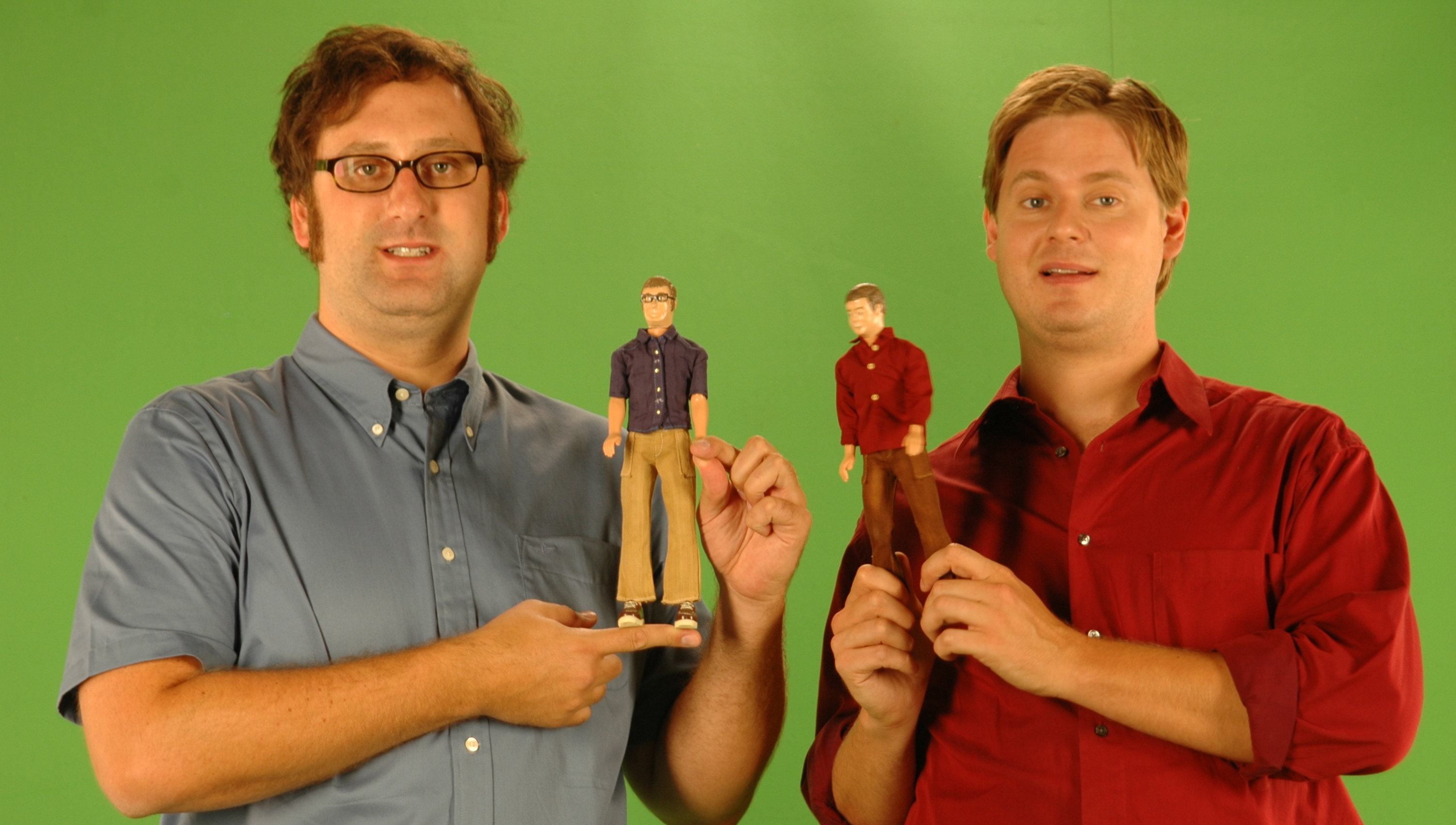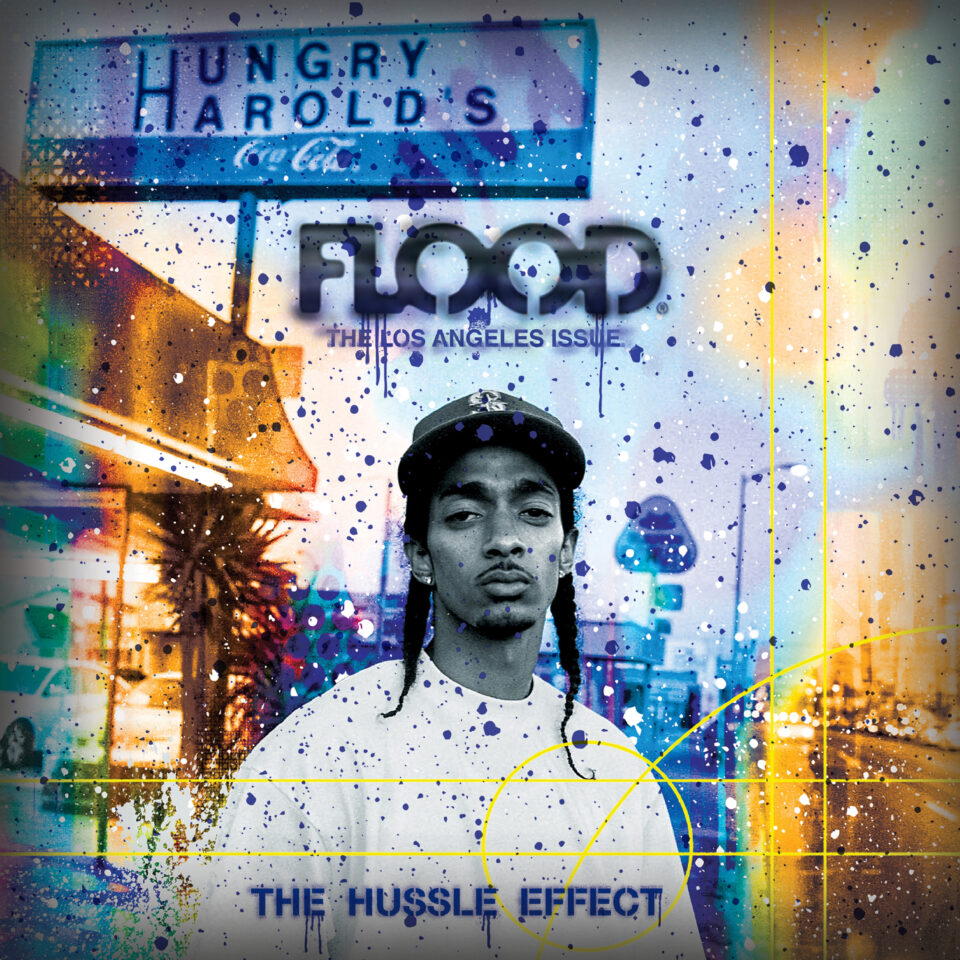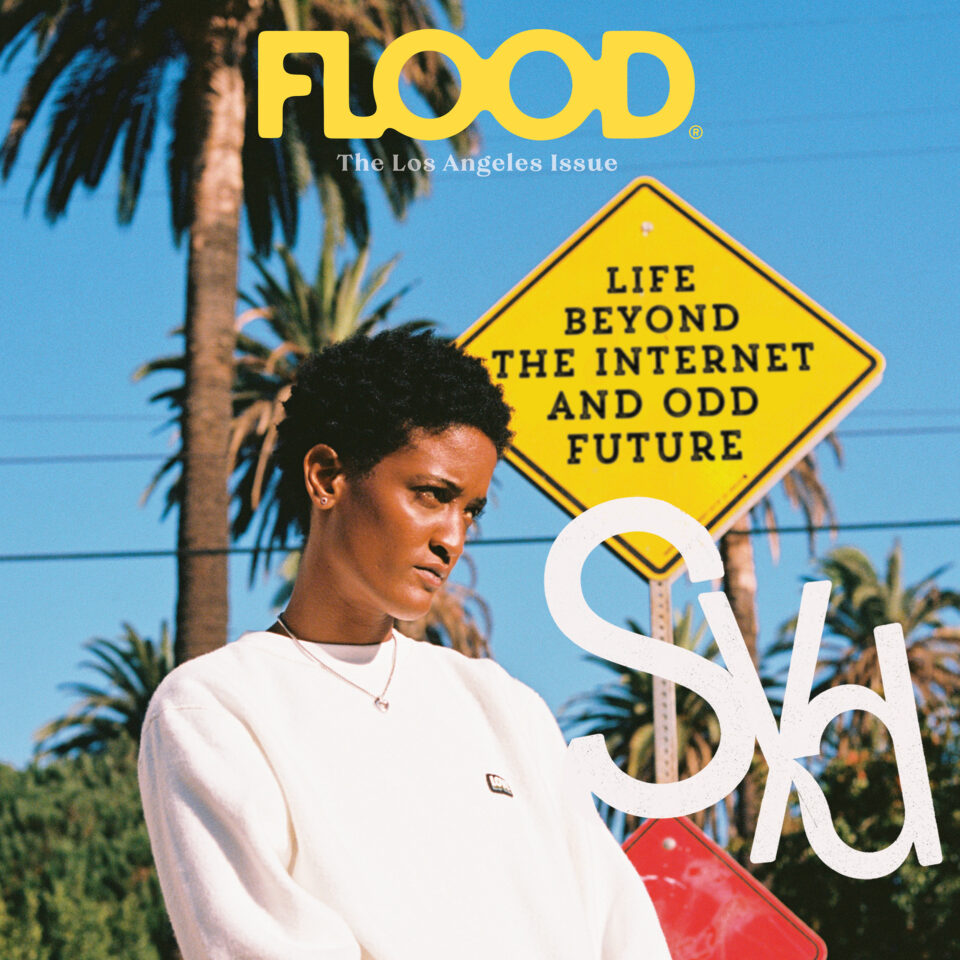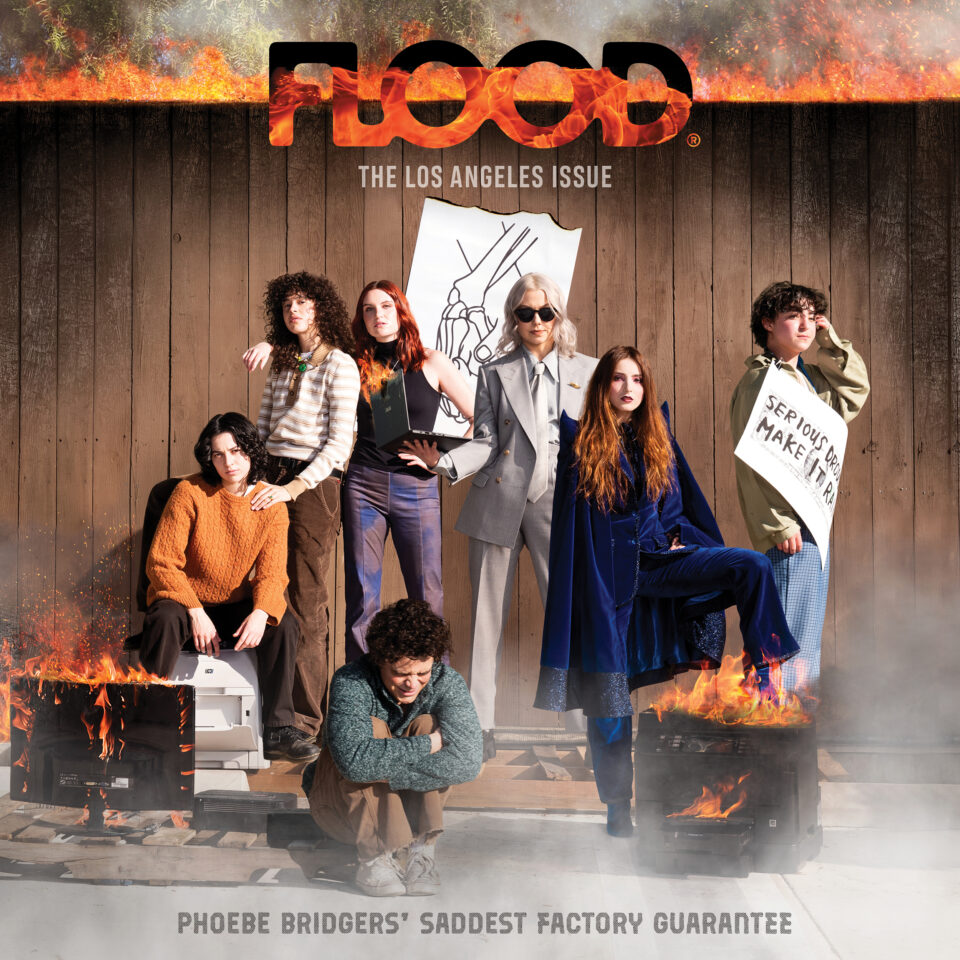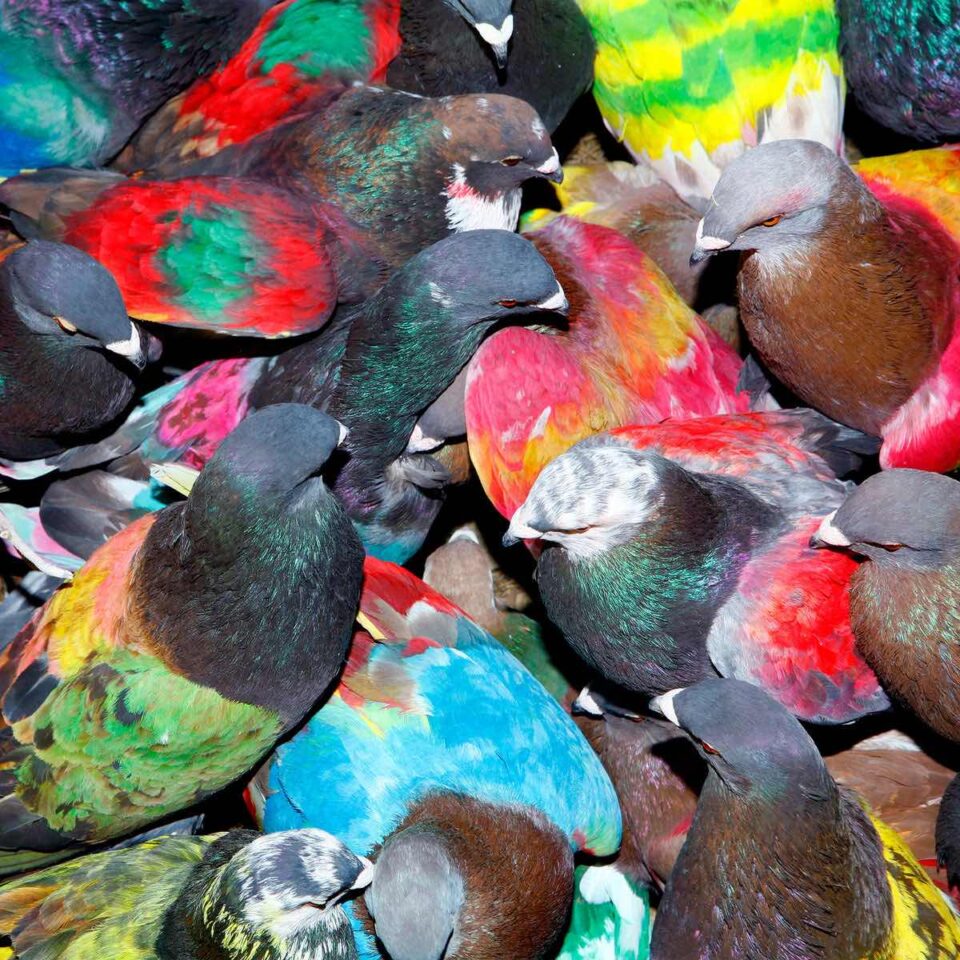It’s as humid inside Philadelphia’s grand, hundred-year-old Merriam Theater as it is outside, with a level of discomfort bordering on distressed casting a pall over the audience. It would be no surprise if all air conditioning was turned off on purpose just for effect. Such cheap tricks, low-level anxiety, and psychic dissonance is a perfect state in which to watch Tim Heidecker and Eric Wareheim ply their brand of uncomfortable avant-garde humor in live celebration of the tenth anniversary of Tim and Eric Awesome Show, Great Job!
Empty pauses, offensive PSAs delivered by reps from a fake college (Dobis U.?), a grouchy German techno-rock band called Zwei Dunkel Jungen playing “Mini Van Highway,” underwear-only routines—on stage, all these elements get wild laughs, but they go on too long to stay funny; staying funny is not necessarily Heidecker and Wareheim’s thing. The longer they sit with a joke, the more it shifts between funny and not, entertaining and bothersome, until they reach something like the sublime. Such unsentimental abstraction is what has defined the duo since they first came together.
“You know—late-night public access, industrial films, floppy-disc file art, that stuff,” says Heidecker quietly of what defines their aesthetic, at least until the first season of their spookily weird Tim & Eric’s Bedtime Stories, another of the pair’s Adult Swim series (the second season of which aired this fall), which finds them pursuing their dark vision in glossy HD. “Eric had been trying to get me to do something Awesome Show again for a while, and I’ve really been thinking about its legacy; we did that already and [it] ended strong, so maybe we should put a period on it,” says Heidecker, who has also been busy with the CIA spoof show Decker for Adult Swim (not to mention having released a Harry Nilsson–inspired album last year). “Then Eric reminded me that Awesome Show was really fun and that it made sense to celebrate with our fans because of the anniversary.”
“You know—late-night public access, industrial films, floppy-disc file art, that stuff.”
Despite his apparent enthusiasm, Wareheim, who appears in Master of None with Aziz Ansari, says that he was more apprehensive about returning to Awesome Show as well, as both he and Wareheim had moved past its odd characters in search of odder characters. “But we started slamming on day one of this tour’s rehearsals,” says Wareheim. “Banged the whole thing out in a month.”
So how did a pair of students from Philly’s Temple University, who began with small, lo-tech sketch-comedy films, come to make one of the weirdest, most awkward—and most acclaimed—comedy series of the past decade? And how did they form a partnership that drew the immediate attention of Bob Odenkirk and came to feature diverse Hollywood names such as Jeff Goldblum, Ben Stiller, Fred Armisen, Karen Black, Frank Black, Maria Bamford, Paul Reubens, Rob Zombie, and John C. Reilly, whose Dr. Steve Brule character became its own doubly-disturbing Adult Swim spinoff? (“Paul Rudd says every time that he sees me that he’s proud to still get called ‘Celery Man’ by our fans,” says Heidecker of Rudd’s classic Tim and Eric character.)
There is no origin story for Awesome Show, Great Job! without Tom Goes to the Mayor, a necessarily cheap (“That’s what we could afford,” says Wareheim) cut-and-paste animated show with live-action elements. That project caught the attention of a post–Mr. Show Odenkirk when Heidecker and Wareheim mailed him a package of their videos.
“The humor element—the thing that drove Tim and I together—is almost a supernatural phenomenon,” says Heidecker, talking about a shared comic aesthetic as if he were talking about a romance. The lo-fi vibe was the fruit of the two of them applying a rudimentary approach to their ideas. They weren’t editors. Video-making was primordial. Their software was bad. “We didn’t know actors, so we were the actors; didn’t know how to make animation but couldn’t afford to pay someone. It was our spirit, the whole DIY, can-do nature of who we are,” says Wareheim. “That’s what comes through in stuff like Tom and Awesome Show. That’s us coming from Philly and hustling.”
Odenkirk loved their videos and began mentoring the pair, eventually jumping on board to help produce and develop a show. While Heidecker moved to New York, Wareheim held down the fort in Philadelphia until a buyer came through: Adult Swim. “We just went for it and up-and-moved to California as soon as Adult Swim made a small offer for our pilot, trusting that Bob would help us put it together,” Wareheim says.
It was a huge risk, but Heidecker and Wareheim were ready to gamble on that opportunity. “Adult Swim liked the sketch-character stuff on our video, but they thought Tom Goes to the Mayor was stronger,” says Wareheim. “Nothing we did was Hollywood,” he adds. “Odenkirk and [Adult Swim creative director Mike] Lazzo had been around the block and they weren’t looking to see more of the same, the boring, the usual, the obvious. To them, we were different.”
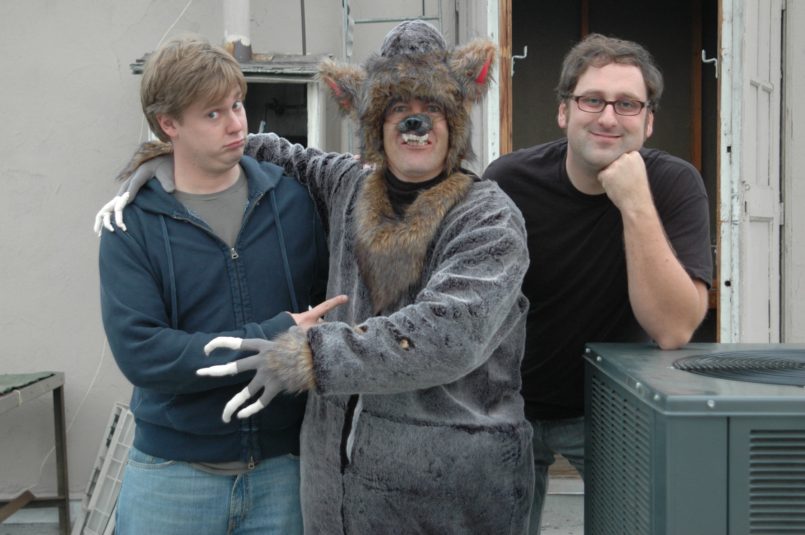
Tim and Eric with Bob Odenkirk
Lazzo and Odenkirk were so pleased with the difference (as were fans such as David Cross and Jack Black, who made appearances and talked the duo up to their friends) that when Tom Goes to the Mayor came and went after only two seasons, no one fretted. It was simply time for Heidecker and Wareheim to stretch and show off their strongest suit.
“We made stuff on the Internet and performed live in LA on the side while we were making Tom so that when it ended, we wanted to do a sketch show next,” says Wareheim. “They wanted us to keep swinging the bat,” Heidecker adds. “There were things we were writing and conceiving that had this Channel 5 KTLA UHF feel, but we weren’t motivated to make things look randomly bad. Awesome Show was not [about] how bad anything looks or we look. It’s a feeling. If we were doing a Cinco commercial [for the blandly ubiquitous fictional corporate brand that sells everything from Food Tubes to Privacy Helmets to B’Owl—a combination bat and owl], it couldn’t be randomly bad. It had to be the look that served the idea the strongest.”
Usually that meant the cable access vibe that served everything from appearances from actor Tairy Greene (Zach Galifianakis) to “Child Showcase” participant Joshua Beard (Patton Oswalt). “It was nice having somebody established like Bob [Odenkirk] who could call in favors, vouch for you, be a part of what you’re doing—not just to bring in another comic’s audience, but to signal that we were OK, and that our shows were cool to do,” notes Heidecker. “This was before YouTube exploded, so you exposed yourself however you could on the Internet and different pockets of people aligned with you for cool cred.”
Wareheim laughs about offering stars such as Jeff Goldblum “not a lot of money” to come to Hollywood for an hour and goof off in their studio. “People were happy to do it, plus we gave them control so that they could develop their own characters,” he says. “Then after a time, people would call us to come in.”
The one man who really helped turn that tide was “Weird Al” Yankovic, who, as a fan of the pair, sought them out to work on a character away from his usual. “We were floored and flipping out since we had grown up with [his work],” says Wareheim. “It’s funny. We’ve been in the biz for like twelve years and people ask us to be on their shows all the time, which is great. But it’s a thirteen-hour commitment at least, considering fittings and stuff. Now, imagine Awesome Show, where we asked people to come in for an hour and improvise. That’s a dream gig.”
It’s when the pair got to season five that things started to get even weirder, more uncomfortable, darker. Most notably, the season featured a notorious “Dream Cream” sequence with the goo-slathered barbecued meat enthusiast Pierre (Ron Austar), who hand-feeds a child rancid hot dogs. The scene made the child actor’s parents so uncomfortable that he ended up being replaced with CGI.
“I think that it was just that we are not programmed for the normal TV business,” says Wareheim of him and Heidecker getting bored with themselves and cranky by season five. “You know, do the show, get the good characters, repeat the same stories over and over so we can syndicate it. We never had that in our blood. We got sick of our characters. If they got the least bit popular we would kill them off; that’s just how we were. By the fifth season it became ‘What else can we do with this format?’”
Which brings us to Tim & Eric’s Bedtime Stories, an anthology horror/comedy series, the pilot of which aired on Halloween 2013. The slightly longer–form Bedtime Stories is more visually arresting and cinematic than Awesome Show—and even, in a fashion, more accessible. “We have the money to play with,” Heidecker says of the show’s production value. “Still, it has to have our voice.”
“Awesome Show was not [about] how bad anything looks or we look. It’s a feeling.”
Of course it does; nobody else tells stories about relationship scenarios verging on sci-fi with offbeat and slightly other-dimensional worlds that are familiar, but not. Heidecker points to Bedtime Stories episode “Toes,” where people get their toes cut off, or “The Bathroom Boys,” where two men are stuck living in a public lavatory. “That is very much our voice, even connected to something such as Tom Goes to the Mayor where everything is surreal but manageable. In Bedtime Stories, we want you to accept this as reality.”
Wareheim goes a little deeper by admitting that Bedroom Stories is filled with nightmares that the pair fear most: a world where a man is obsessed by the singing of a teenage boy, or one where a character’s wife and neighbor want to bury him alive. “The overarching theme is like, the worst things that Tim and I can imagine in the real world,” he says.
“Things that are genuine nightmares to us—addiction, anxiety, depression, human faults. Like a man who would prefer being taken care of as a son rather than as a husband,” says Heidecker about one of Bedtime Stories’ newest tales. “It’s silly and it’s sad. [It’s] about how grown-ups just don’t want responsibility,” he adds. “These are the things we want to talk about now.”
Growing up. Adult fears. That’s a far cry from what they wanted to discuss during the awkward stares and cheap visual semantics of Awesome Show, Great Job! ten years ago. Then again, maybe it’s not, considering the uncomfortable humor of getting one’s toes cut off or of being trapped in a bathroom forever.
“Either way, it’s very clear that Awesome Show, Great Job! will be the best thing we ever do—that will be the perception, not by us, but by a large part of the public,” says Heidecker. “And that’s cool. It ate up the biggest part of our most creatively fertile period. Not to compare us to grapes, but you make the wine at a very young period and just hope it has legs, and everything else comes from that yield. I don’t think that we’ll ever be as motivated, hungry, and fearless as we were ten years ago. Then again, I could be wrong. No matter what, it’s Awesome Show, Great Job! that will be mentioned first in my obituary.” FL
This article appears in FLOOD 7. You can download or purchase the magazine here.

